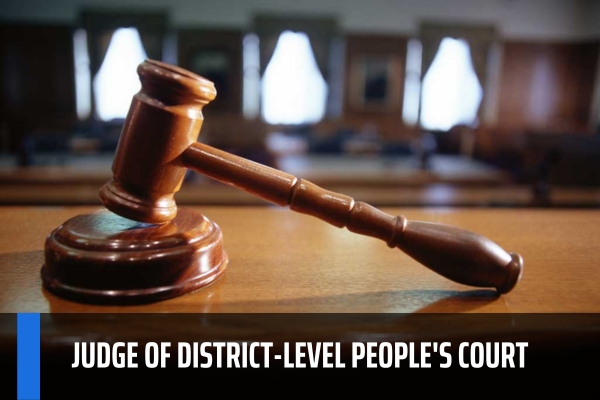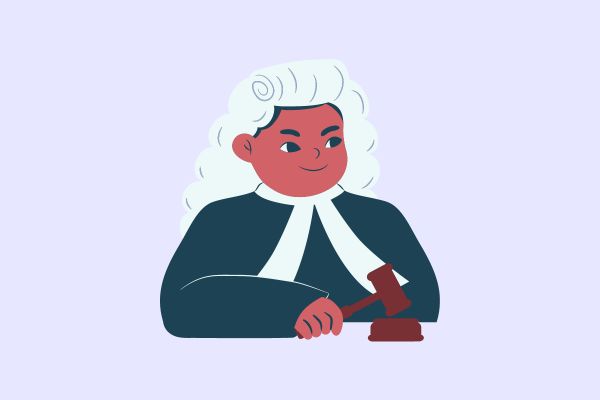Is a Judge of district-level People's Court an official or a public employee? Who has the right to appoint Judges of district-level People's Courts in Vietnam?
- Vietnam: Is a Judge of district-level People's Court an official or a public employee?
- Who has the right to appoint Judges of district-level People's Courts in Vietnam?
- What is the organizational structure of district-level people’s courts in Vietnam?
- What is the organizational structure of the provincial-level People's Courts in Vietnam?
Vietnam: Is a Judge of district-level People's Court an official or a public employee?
Officials in the People's Court system as prescribed in Article 7 of Decree 06/2010/ND-CP are as follows:
Civil servants in the people's court system
1. Vice Presidents of the Supreme People's Court; Presidents and Vice Presidents of courts and specialized tribunals; Judges of the Supreme People's Court; court secretaries; persons working in the offices, departments, divisions and courts and specialized tribunals under the Supreme People's Court;
2. Presidents and Vice Presidents of provincial-level People's Courts; Presidents and Vice Presidents of specialized tribunals; Judges of provincial-level People's Courts; court secretaries; persons working in the offices, divisions, departments and specialized tribunals under provincial-level People's Courts;
3. Presidents and Vice Presidents of district-level People's Courts; Judges of district-level People's Courts; court secretaries; persons working in district-level People's Courts.
According to the above regulations, district-level People's Court judges are officials.

Is a Judge of district-level People's Court an official or a public employee? Who has the right to appoint Judges of district-level People's Courts in Vietnam?
Who has the right to appoint Judges of district-level People's Courts in Vietnam?
Pursuant to Clause 1, Article 65 of the Law on Organization of the People's Courts 2014 stipulates as follows:
Duties and powers of judges
1. Judges are persons who fully meet the conditions and criteria prescribed by this Law and appointed by the President to perform the adjudicating duty.
2. Judges shall perform the duties and exercise the powers prescribed in Article 2 of this Law and relevant laws.
Thus, a district-level People's Court judge is a person who meets the conditions and standards according to the provisions of the 2014 Law on Organization of the People's Courts and is appointed by the President to perform judicial duties.
What is the organizational structure of district-level people’s courts in Vietnam?
Pursuant to Article 45 of the Law on Organization of the People's Courts 2014, it stipulates the organizational structure of the district-level People's Court as follows:
Organizational structure of people’s courts of rural districts, urban districts, towns, provincial cities and the equivalent
1. A people’s court of a rural district, urban district, town, provincial city or the equivalent may have criminal, civil, family and juvenile, and administrative handling tribunals. In case of necessity, the National Assembly Standing Committee may decide to establish other specialized tribunals at the proposal of the Chief Justice of the Supreme People’s Court.
Based on the provision of this Clause and adjudication requirements and practices of each of courts of rural districts, urban districts, towns, provincial cities and the equivalent, the Supreme People’s Court shall decide on the organization of specialized tribunals.
2. The assisting apparatus.
3. A people’s court of a rural district, urban district, town, provincial city or the equivalent has its chief justice, deputy chief justices, presidents and vice presidents of tribunals, judges, court clerks, examiners in charge of judgment enforcement, other civil servants and employees.
Thus, the organizational structure of the district-level People's Court is as follows:
- A people’s court of a rural district, urban district, town, provincial city or the equivalent may have criminal, civil, family and juvenile, and administrative handling tribunals.
- In case of necessity, the National Assembly Standing Committee may decide to establish other specialized tribunals at the proposal of the Chief Justice of the Supreme People’s Court. (the organization of specialized Courts at district-level People's Courts is guided by Circular 01/2016/TT-CA).
- Based on the provision of this Clause and adjudication requirements and practices of each of courts of rural districts, urban districts, towns, provincial cities and the equivalent, the Supreme People’s Court shall decide on the organization of specialized tribunals.
- The assisting apparatus (The Chief Justice of the Supreme People's Court decides to establish and regulate the tasks and powers of the assisting apparatus of the district-level People's Court).
- A people’s court of a rural district, urban district, town, provincial city or the equivalent has its chief justice, deputy chief justices, presidents and vice presidents of tribunals, judges, court clerks, examiners in charge of judgment enforcement, other civil servants and employees.
What is the organizational structure of the provincial-level People's Courts in Vietnam?
Pursuant to Article 38 of the Law on Organization of the People's Courts 2014, it is stipulated as follows:
Organizational structure of people’s courts of provinces and centrally run cities
1. The organizational structure of a people’s court of a province or centrally run city consists of:
a/ The judicial committee;
b/ The criminal, civil, administrative, economic, labor, and family and juvenile tribunals.
In case of necessity, the National Assembly Standing Committee shall decide to establish other specialized tribunals at the proposal of the Chief Justice of the Supreme People’s Court.
Based on the provision of this Point and requirements of adjudicating practices of each of people’s courts of provinces and centrally run cities, the Chief Justice of the Supreme People’s Court shall decide on the organization of specialized tribunals;
c/ The assisting apparatus.
2. A people’s court of a province or centrally run city has its chief justice, deputy chief justices, presidents and vice presidents of tribunals, judges, examiners, court clerks, other civil servants and employees.
Thus, the organizational structure of the provincial-level People's Courts is implemented according to the above regulations.
LawNet
